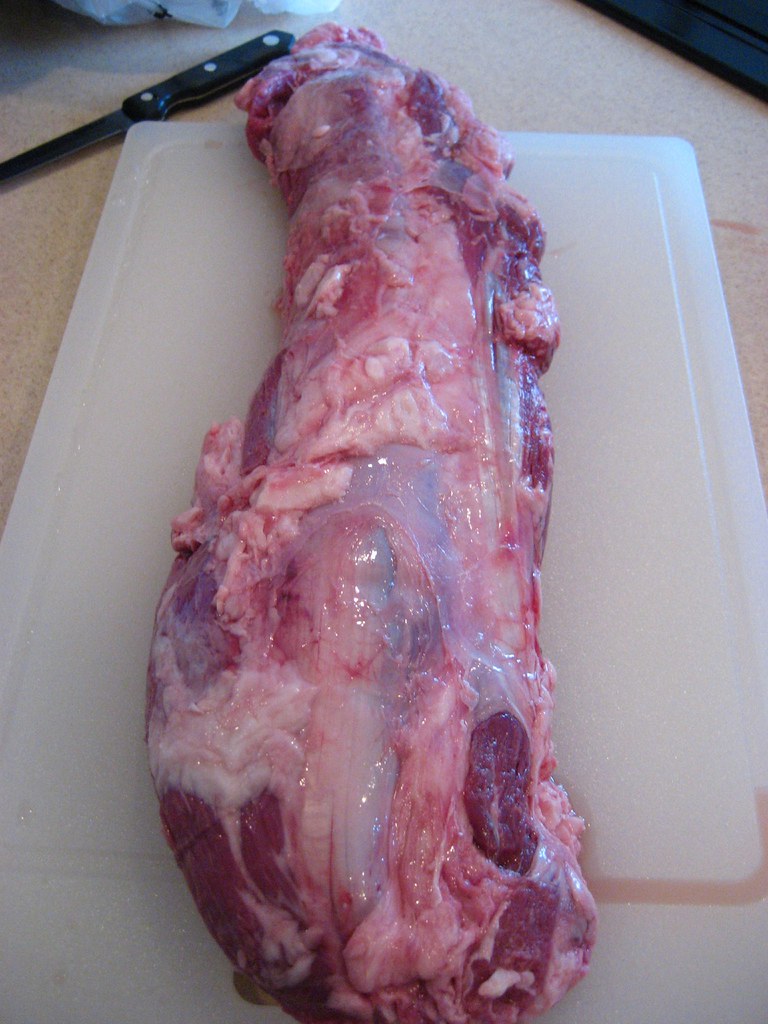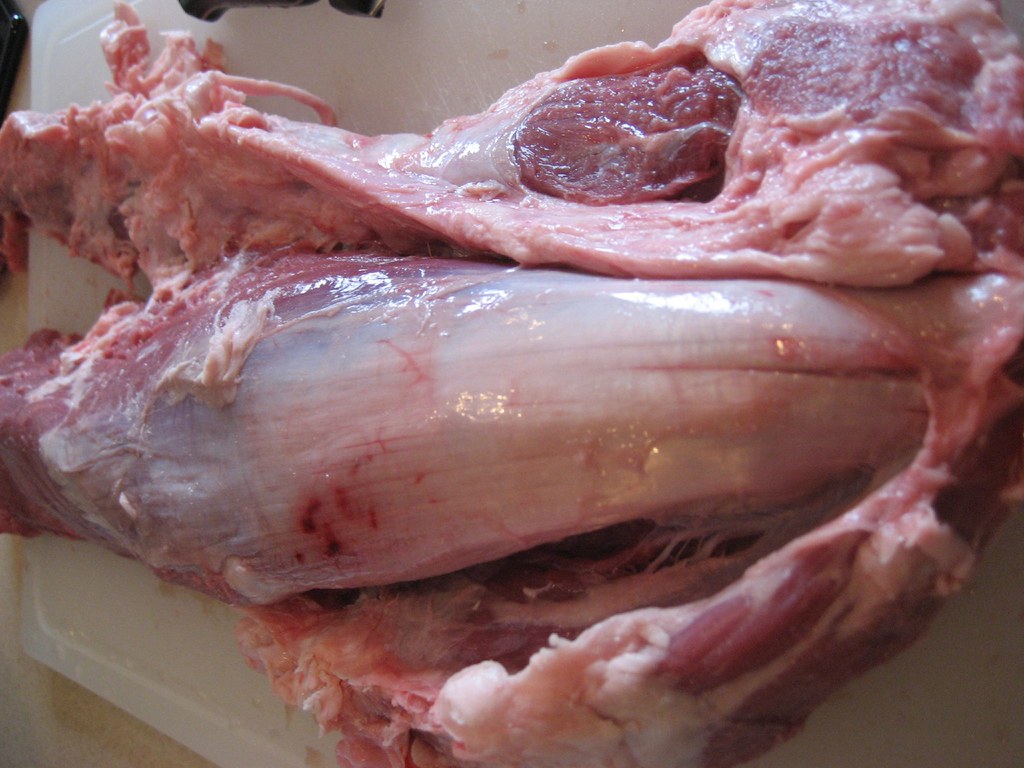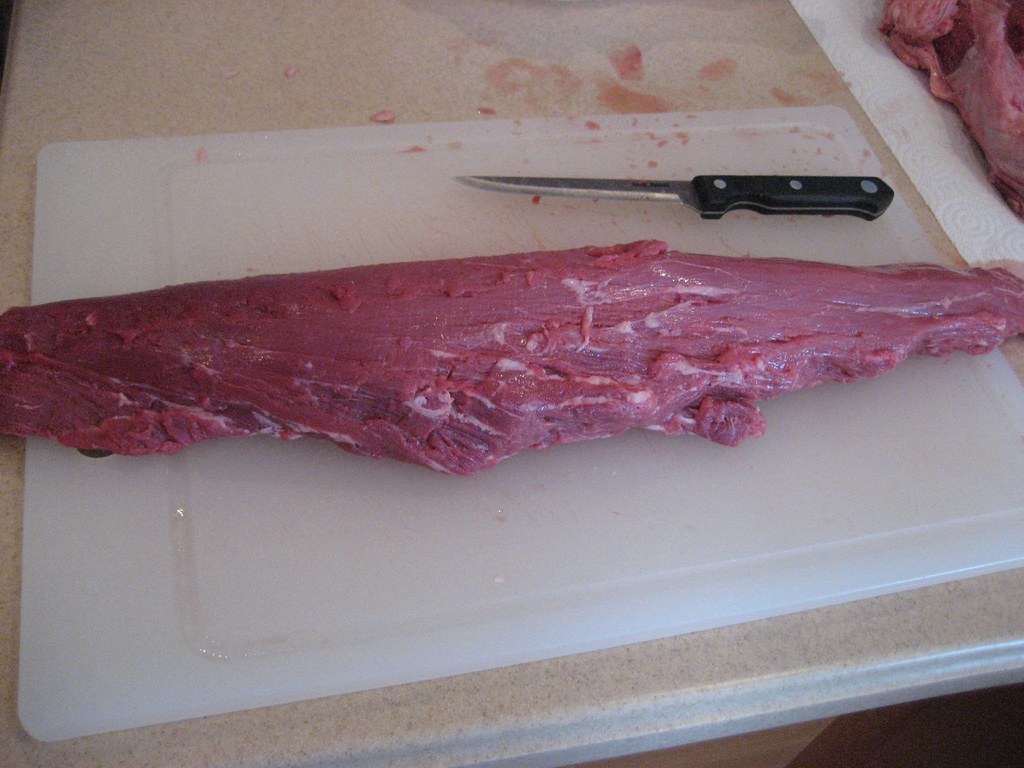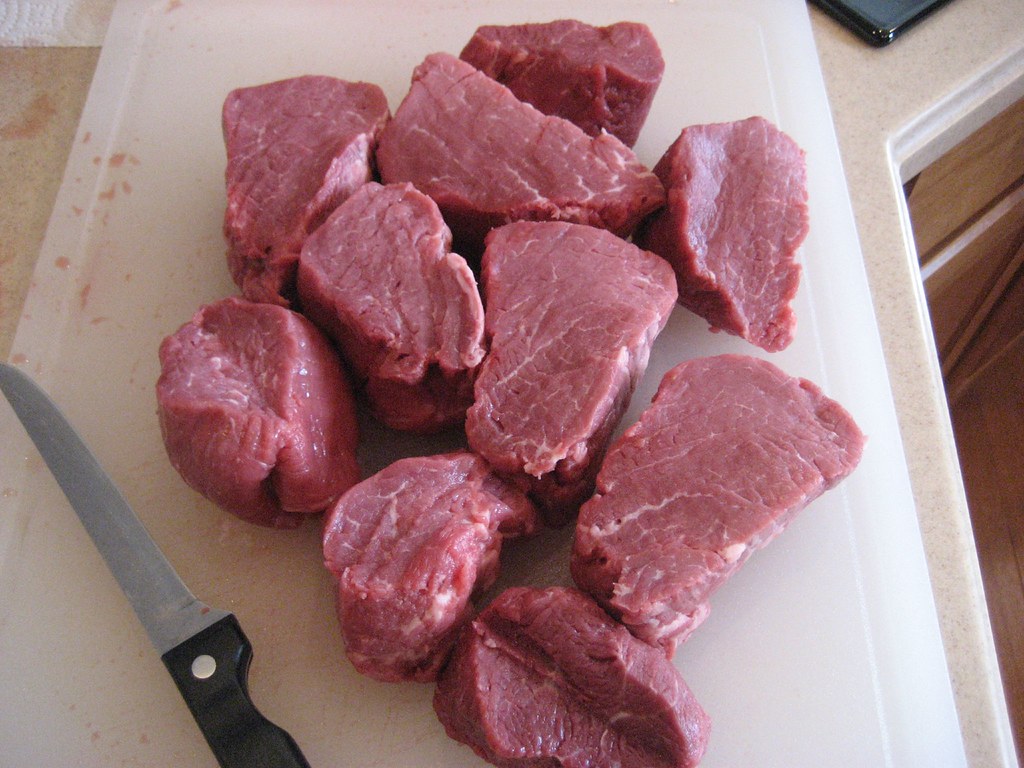Fillet Prep
While we spent a great weekend with Tim, Kathy, Samantha and Kara, I also got the chance to document my dissection of a beef tenderloin. Whenever we plan ahead, we like to buy a cryo-pack beef tenderloin, otherwise known as a PSMO (pissmo).
cheese steaks and at our house, By doing some quick butcher work, you really do save some money, at least several dollars a pound. The process is simple and the results are always so good. The best part? That would be the "chain". It is a long piece of beef and fat that runs the entire length of the tenderloin. It is the absolute best for making philly steakd and at our house, philly cheese steaks are always on a pizza!
Step One: Photograph your Prize!

Step Two: Using your hands, start to remove the tenderloin from the chain and excess fat.

Step Three: Once you work away as much as you can manually, start to use your knife. Think of the process like playing the game of Operation...minus the glowing nose and buzzer of course.

Step Four: After the chain and excess beef is removed, it is time to remove the silverskin. The best way to do this is by sliding your knife just underneath the silver skin to separate it from the surface. Then, peel the silverskin off the tenderloin. I often use a paper towel on the silverskin to maintain a good grasp. The stuff is slippery and tough.

Step Five: After the silverskin is removed, cut away any large areas of fat. Your final result should look like this:
 Step Six: Either cut up your tenderloin into fillets, or keep it whole to grill as roast, or do both! Remember, just about everything you pulled off is usable, so don't let it go to waste.
Step Six: Either cut up your tenderloin into fillets, or keep it whole to grill as roast, or do both! Remember, just about everything you pulled off is usable, so don't let it go to waste.

Whole tenderloins are often sold as PSMOs (pismos), which is short for peeled, silverskin, and side muscle left on. The PSMO is vacuum sealed in plastic, and can be safely refrigerated longer than many other cuts of meat. PSMOs also offer considerable savings over smaller cuts as they require little handling by the butcher, but obviously require more preparation on the part of the chef. (Wikipedia)
cheese steaks and at our house, By doing some quick butcher work, you really do save some money, at least several dollars a pound. The process is simple and the results are always so good. The best part? That would be the "chain". It is a long piece of beef and fat that runs the entire length of the tenderloin. It is the absolute best for making philly steakd and at our house, philly cheese steaks are always on a pizza!
Step One: Photograph your Prize!

Step Two: Using your hands, start to remove the tenderloin from the chain and excess fat.

Step Three: Once you work away as much as you can manually, start to use your knife. Think of the process like playing the game of Operation...minus the glowing nose and buzzer of course.

Step Four: After the chain and excess beef is removed, it is time to remove the silverskin. The best way to do this is by sliding your knife just underneath the silver skin to separate it from the surface. Then, peel the silverskin off the tenderloin. I often use a paper towel on the silverskin to maintain a good grasp. The stuff is slippery and tough.

Step Five: After the silverskin is removed, cut away any large areas of fat. Your final result should look like this:
 Step Six: Either cut up your tenderloin into fillets, or keep it whole to grill as roast, or do both! Remember, just about everything you pulled off is usable, so don't let it go to waste.
Step Six: Either cut up your tenderloin into fillets, or keep it whole to grill as roast, or do both! Remember, just about everything you pulled off is usable, so don't let it go to waste.
